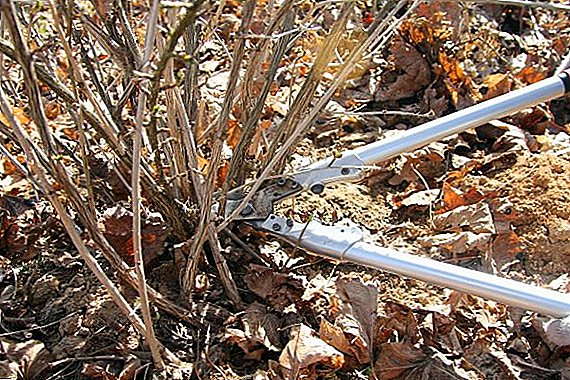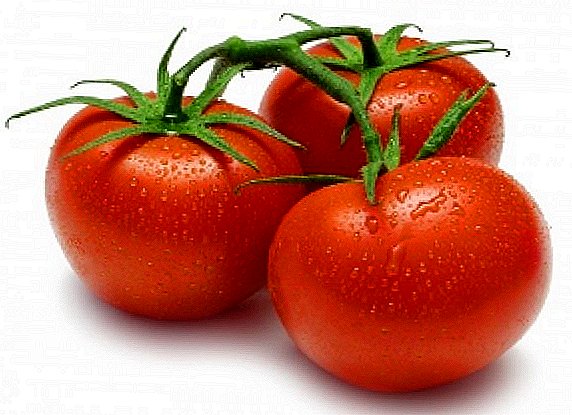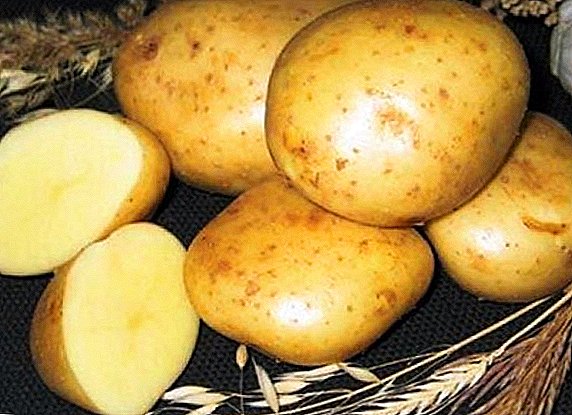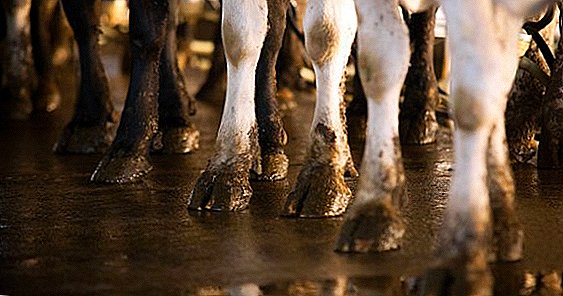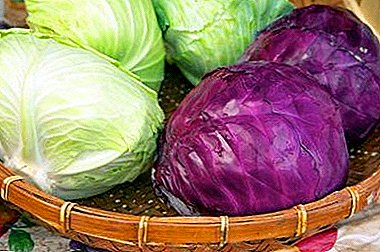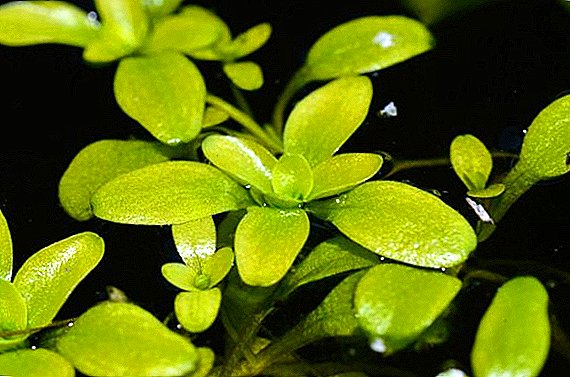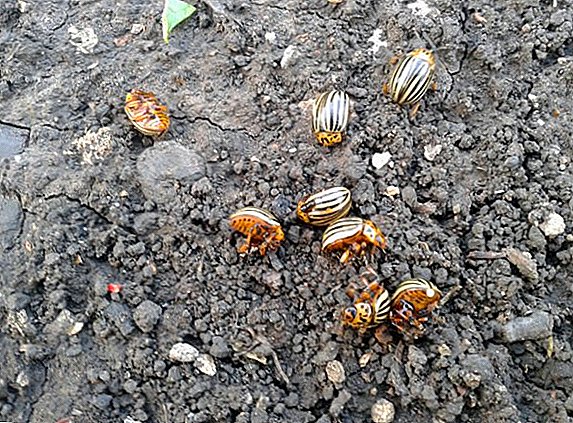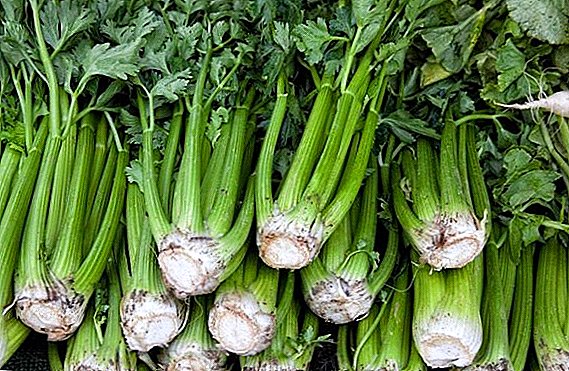 Today, celery is increasingly used not only as an additional, but also the main food culture. The plant can saturate the body with many valuable substances, as well as perfectly satisfy hunger. At the same time, the quality of the crop is very dependent on the observance of the harvesting technique and the choice for this optimal period. The article will discuss the main features of this plant, as well as detailed instructions for its preparation.
Today, celery is increasingly used not only as an additional, but also the main food culture. The plant can saturate the body with many valuable substances, as well as perfectly satisfy hunger. At the same time, the quality of the crop is very dependent on the observance of the harvesting technique and the choice for this optimal period. The article will discuss the main features of this plant, as well as detailed instructions for its preparation.
Celery Types
Celery is a common herb of the umbrella family. Only 3 varieties of this celery are known: root, leaf and stalked. About each of them in more detail - on.
Root
The root variety is commonly understood as those types of vegetables that are aimed at the formation of large and highly nourishing tubers. They develop from the core root system, the tissues of which are able to accumulate nutrients. This feature is a physiological necessity, because for the next season, flower stalks will form from the tuber, on which seeds will later ripen. The above-ground part of the plant is a low furrowed-branched stem, often unsuitable for consumption.  The fruits of root celery are on average about 10 cm in diameter, but in some cases, particularly productive hybrids can produce larger tubers. The flesh of the fruit has a rather dense and fleshy structure, as well as a light aroma. By its nutritional value, the root crop is not inferior to the potato, while it is distinguished by a number of positive qualities. Even after heat treatment, the pulp contains a huge amount of various useful compounds and antioxidants.
The fruits of root celery are on average about 10 cm in diameter, but in some cases, particularly productive hybrids can produce larger tubers. The flesh of the fruit has a rather dense and fleshy structure, as well as a light aroma. By its nutritional value, the root crop is not inferior to the potato, while it is distinguished by a number of positive qualities. Even after heat treatment, the pulp contains a huge amount of various useful compounds and antioxidants.
Most often on the garden grow the following varieties:
- Prague giant;
- Diamond;
- Cascade;
- Apple;
- Strongman;
- Anita
Did you know? Celery is a natural antibiotic because it contains specific substances that can have an anti-inflammatory effect without any harm to the body.
Sheet
Leaf varieties of plants differ in a number of morphological characteristics. They are unable to form a powerful rhizome, but they also have a characteristic aroma and flavor. This is one of the earliest plants, therefore, along with dill and parsley, it is quite widely used as a spicy dressing for all sorts of dishes. At the same time, unlike other celery varieties, leafy has a more delicate and refined taste.  Such specimens are a small herb, with a thin and branched stem that develops from a rosette. The main value for vegetable growers are young leaves. They are characterized by small size (3-5 cm in diameter), as well as pinnately dissected structure, with 3-5 blades. The plant is unpretentious, so it can be successfully grown both in the garden and on the windowsill.
Such specimens are a small herb, with a thin and branched stem that develops from a rosette. The main value for vegetable growers are young leaves. They are characterized by small size (3-5 cm in diameter), as well as pinnately dissected structure, with 3-5 blades. The plant is unpretentious, so it can be successfully grown both in the garden and on the windowsill.
Most popular varieties:
- Cheerfulness;
- Zahar;
- Sail;
- Samurai.
Learn more about the planting and care of celery leaf.
Stalked
Celery celery is grown for harvesting large and fleshy stems. Like leaf varieties, the stalk is unusual to form a large tuber, so most of the nutrients are stored in the stem. This vegetable is quite popular, it has a rich taste and nutritional value.  The plant is a complex of numerous branches, developing from the rosette. The stem has a striated structure, about 30 cm in height and 2-4 cm in diameter. The color of the stem can be varied: from all sorts of green to white and even slightly reddish. At the top of the stems are numerous pinnately dissected leaves, with 3-5 lobes, no more than 5 cm in diameter.
The plant is a complex of numerous branches, developing from the rosette. The stem has a striated structure, about 30 cm in height and 2-4 cm in diameter. The color of the stem can be varied: from all sorts of green to white and even slightly reddish. At the top of the stems are numerous pinnately dissected leaves, with 3-5 lobes, no more than 5 cm in diameter.
Celery celery is divided into the following subspecies:
- in need of bleaching - ripen only in the case of specific care;
- self-lightening - ripen independently;
- green - used in green, not able to acquire a characteristic white color.
Important! Celery celery is contraindicated for pregnant women. Its composition contains substances that can enhance the tone of the uterus, which is fraught with miscarriage.
Most often on the garden you can find the following varieties:
- Gold;
- Malachite;
- Tango;
- Atlant;
- Male prowess.
Signs of ripening culture
Identifying celery readiness to harvest is fairly simple. The first thing you should pay attention to is the growing season. Usually in the description of the variety it is indicated how many days approximately its full maturity occurs. Next, you should look at the characteristic morphological features of a mature harvest. Leafy species cut off after that, so the greens will reach the optimal size, and an extensive stem with numerous leaves will form from a powerful outlet. 
Celery stalk they are withdrawn only after the stems have fully formed, and their flesh acquires a characteristic crunch during breaking, as well as a delicate taste and aroma. In most species, the bright green shade of the stems changes to white or green-white. 
Root varieties clean in late autumn, because for optimal quality and quality of tubers, the tubers must always ripen well, and the tip of the fruit should appear from the ground. The main evidence of the need to harvest tubers is the condition of the tops: as soon as it starts to wither, turn yellow and dry slowly, the crop is ready for withdrawal from the garden bed. 
Harvest
Much depends on proper harvesting. First of all, the ability to choose the optimal period for harvesting provides its quality, which helps the celery to regale itself for quite a long time. In addition, it affects the quality of the harvest, because only in this case you can get a vegetable without unpleasant bitterness.
Terms of harvesting vegetables
Terms of harvesting, first of all, depend on the precocity of the crop, as well as its type. The first harvest of leaf celery is harvested after 60 days, and the last - after 80 days. Thus, greens are harvested from about the end of June to the beginning of July until mid-August. Stalked species ripen significantly longer, for this they need at least 90-100 days, so the stalks are best removed from August to the end of October. Tubers for ripening, depending on the hybrid, usually need from 90 to 160 days, so they are removed from the beginning of autumn, until the first frost.
Important! Approximately a month before harvesting above the root with a sharp knife, you need to remove the tops. This will help to increase crop yields, as well as to get a better crop.
Harvesting rules
Compliance with celery harvesting equipment is a rather important requirement. In inept hands, picking greens and fruits can lead to a deterioration in the quality of the harvest. To avoid this, for harvesting greens (leaf and stalked celery) use a sharp garden or kitchen knife, which cut the necessary amount of greenery directly under the root, leaving a small stump above the ground, 1-2 cm high.  Harvesting root crops is more laborious. It is carried out by digging or pulling out fruit. Pulling is used when harvesting root vegetables for preparing fresh salad to avoid damage to the neighboring fruits. Dig a vegetable during the mass harvesting of fruits. Regardless of the method, celery is withdrawn so that the tubers remain intact, without any damage and rifts, otherwise within a few weeks the vegetable will start to spoil.
Harvesting root crops is more laborious. It is carried out by digging or pulling out fruit. Pulling is used when harvesting root vegetables for preparing fresh salad to avoid damage to the neighboring fruits. Dig a vegetable during the mass harvesting of fruits. Regardless of the method, celery is withdrawn so that the tubers remain intact, without any damage and rifts, otherwise within a few weeks the vegetable will start to spoil.
Further storage of vegetable
Harvested vegetables are usually used for food immediately, as they quickly deteriorate at room temperature. However, if the harvest pleased with impressive indicators, it is necessary to subject it to special storage conditions.
Cold storage and freezing
Celery greens are most often stored in the refrigerator or freezer. Petioles or leaves are carefully cleaned of dirt, wilted and damaged parts, and then cut off the remnants of the roots. After that, the greens are packed in plastic bags, sprinkled with water and wrapped tightly. At a temperature of 0 ... + 5 ° С greens can be stored for 30 days after harvest.
Did you know? In ancient Greece, celery was used for decorative purposes, it was used to decorate tombs, as well as making festive wreaths.
However, for this purpose it is necessary to sort out at least once a week carefully from the fading parts. In order to save celery stalks and leaves until mid-winter, packaged packages can be moved to the freezer, and the temperature should be at least -20 ° C. You can freeze and chopped tubers, but in this case, the vegetable will be suitable only for subsequent heat treatment.
Preservation
For many, it remains a mystery how to store celery outside the refrigerator. For this you can use conservation. In addition to preserving the vegetable until the next season, you can create an aromatic billet for cooking all kinds of hot and cold dishes. Canned plant usually with pickling or pickling, including in combination with all sorts of vegetables. Souring is also widely used, and both greens and a root vegetable, chopped on a grater, can serve as raw materials. 
Storing fresh celery roots
Selected tubers are stored in a room that is characterized by a non-hot temperature (+ 10 ... + 15 ° C), high humidity (70-80%) and the absence of sunlight. For short storage, a refrigerator is used for this. Before this, the vegetable is thoroughly washed, dried and wrapped with cling film. In the fridge, the root vegetable can be stored for up to 10 days. For longer storage, the vegetable is transferred to the cellar or to the balcony. Fruits in one layer are placed in deep boxes and covered with clean river sand.
Read also how to save celery for the winter.
To ensure an optimal microclimate, the drawers can be covered with cling film. However, in this case, they need to be well ventilated at least once a week (the film is removed for a while). In winter, celery can not only diversify a person’s diet, but also enrich it with useful vitamins and minerals. With the help of the described recommendations, you will be able to harvest celery not only quickly, but also with the highest quality possible, which is the main condition for the successful storage of the vegetable.



